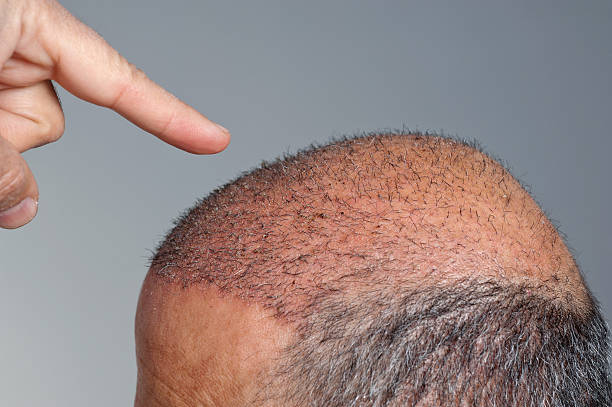Hair Transplants in the USA: Effective Solutions Without Traveling Abroad
Hair loss is a challenge faced by millions of men and women across the United States, often affecting confidence and everyday life. While many consider traveling abroad – especially to Turkey – for hair restoration, modern hair transplant procedures are now widely available in the USA. Certified clinics and experienced specialists provide access to FUE and FUT techniques locally, removing the need for long trips. Patients are especially interested in realistic results, recovery times, costs, and long-term care. This article explores the main methods, what to expect during and after the procedure, and how to choose a reputable clinic in the United States.

What Are the Differences Between FUE and FUT Hair Transplants?
Hair transplantation primarily involves two main techniques: Follicular Unit Extraction (FUE) and Follicular Unit Transplantation (FUT). FUE involves extracting individual hair follicles directly from the donor area using a small punch tool, leaving tiny circular scars that are barely visible. This method allows for shorter recovery times and the ability to wear hair very short without noticeable scarring.
FUT, also known as strip harvesting, involves removing a strip of scalp from the donor area and dissecting it into individual follicular units under microscopic guidance. While this technique leaves a linear scar, it typically allows for the transplantation of more grafts in a single session and often provides better follicle survival rates. The choice between these methods depends on individual factors including hair type, desired coverage area, and lifestyle preferences.
What Are the Requirements for a Successful Hair Transplantation?
Successful hair transplantation requires several key factors to be evaluated before proceeding. Candidates must have sufficient donor hair density in areas typically resistant to balding, such as the back and sides of the scalp. The donor hair should be healthy and of good quality to ensure successful transplantation and natural-looking results.
Medical evaluation is essential to rule out underlying conditions that might affect healing or hair growth. Patients should be in good overall health, with realistic expectations about the procedure outcomes. Age considerations are important, as performing transplants too early in the balding process may require additional procedures later. Additionally, patients must be committed to proper post-operative care and follow-up appointments to ensure optimal healing and results.
How Do Natural Results and Recovery After the Procedure Work?
Recovery from hair transplantation involves several phases that patients should understand before undergoing treatment. Initial healing typically occurs within the first week, during which transplanted grafts begin to establish blood supply. Patients may experience some swelling and mild discomfort, which generally subsides within a few days with proper care and prescribed medications.
The transplanted hair initially falls out within two to three weeks, which is a normal part of the process called shock loss. New hair growth typically begins around three to four months post-procedure, with significant improvement visible by six months. Final results are usually apparent after 12 to 18 months, revealing natural-looking hair that grows, can be cut, and styled normally. The key to natural results lies in proper graft placement, appropriate hairline design, and skilled surgical technique.
What Are the Risks and Possible Complications of Hair Transplants?
Like any surgical procedure, hair transplantation carries certain risks that patients should understand. Common minor complications include temporary swelling, bruising, and numbness in the treated areas. Some patients may experience temporary shock loss of existing hair around the transplant site, though this typically resolves within a few months.
More serious but rare complications can include infection, excessive bleeding, or poor wound healing. Scarring, while minimal with modern techniques, remains a possibility, particularly with FUT procedures. Some patients may experience unnatural-looking results due to poor graft placement or inadequate surgical skill. Choosing experienced, board-certified surgeons significantly reduces these risks and helps ensure satisfactory outcomes.
Why Choose a Certified Clinic in the USA Instead of Traveling Abroad?
Selecting a certified clinic within the United States offers numerous advantages over medical tourism for hair transplantation. American clinics operate under strict FDA regulations and medical board oversight, ensuring adherence to safety standards and quality control measures. Surgeons must maintain proper licensing and continuing education requirements, providing patients with qualified medical professionals.
Accessibility for follow-up care represents a significant benefit of domestic treatment. Post-operative appointments, potential complications, and long-term maintenance can be easily managed without international travel. Additionally, patients have legal recourse and established medical malpractice protections that may not exist in other countries. Language barriers are eliminated, ensuring clear communication throughout the treatment process.
| Clinic Type | Average Cost Range | Key Services | Follow-up Care |
|---|---|---|---|
| Premium US Clinics | $8,000-$15,000 | FUE, FUT, PRP therapy | Comprehensive local support |
| Mid-tier US Providers | $4,000-$8,000 | FUE, FUT options | Standard follow-up included |
| International Options | $2,000-$5,000 | Basic FUE/FUT | Limited remote support |
Prices, rates, or cost estimates mentioned in this article are based on the latest available information but may change over time. Independent research is advised before making financial decisions.
Hair transplantation in the United States provides reliable, regulated, and accessible solutions for those experiencing hair loss. The combination of advanced surgical techniques, qualified practitioners, and comprehensive aftercare makes domestic treatment an attractive option. While international alternatives may appear cost-effective initially, the total value proposition including quality assurance, follow-up care, and legal protections often favors treatment within the United States. Patients considering hair restoration should consult with board-certified surgeons to determine the most appropriate treatment approach for their individual needs and circumstances.
This article is for informational purposes only and should not be considered medical advice. Please consult a qualified healthcare professional for personalized guidance and treatment.




